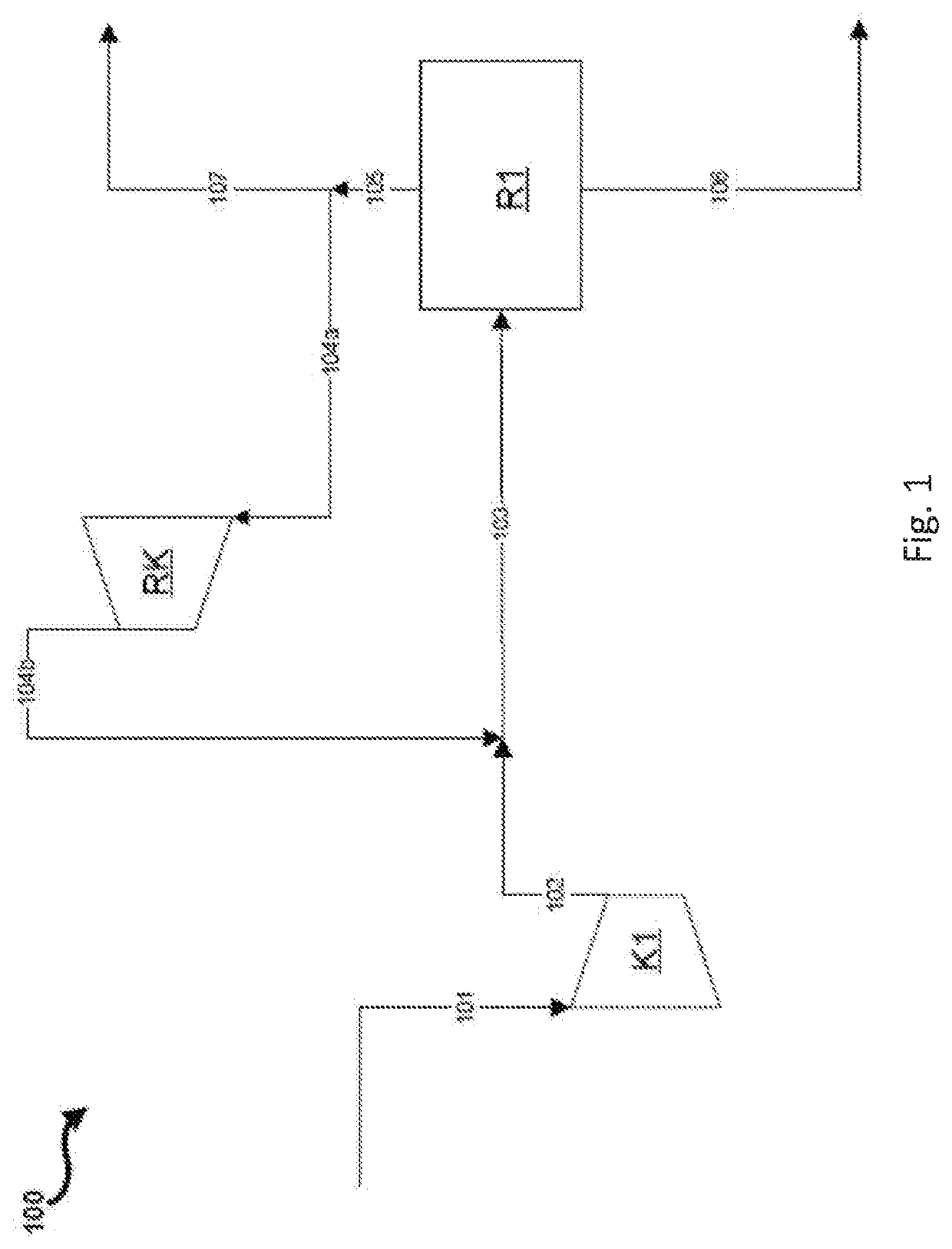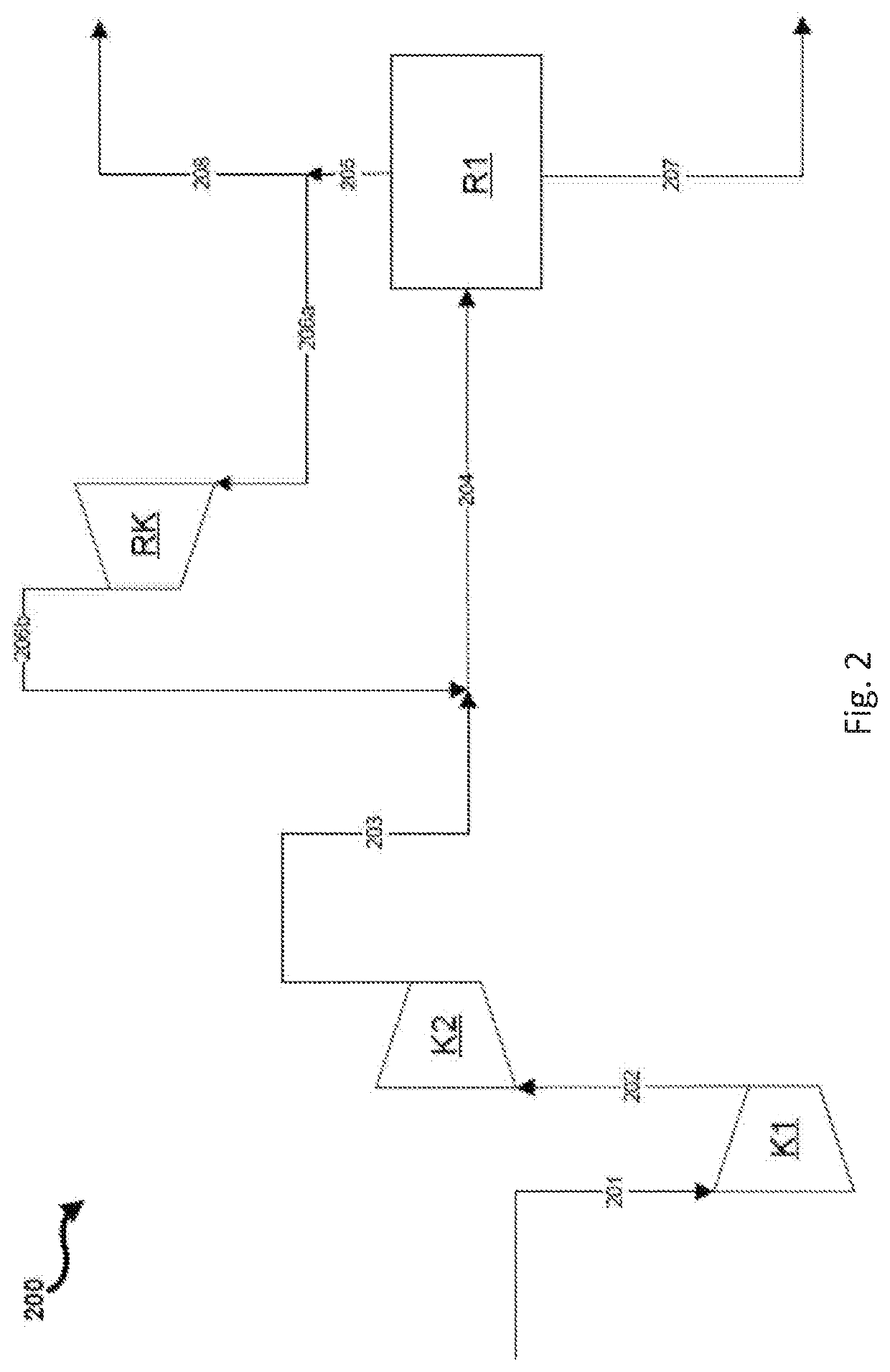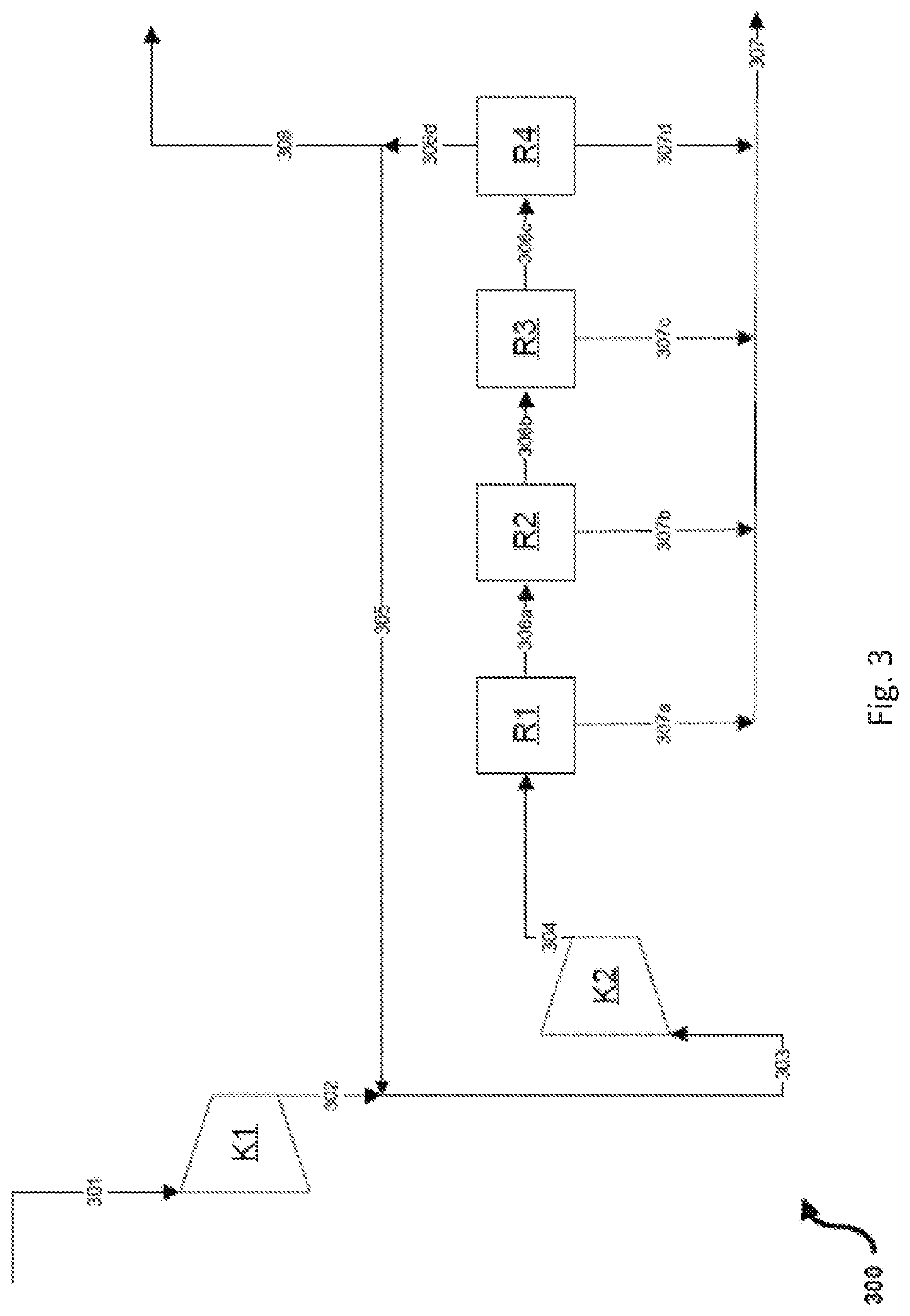Process and plant for producing methanol
- Summary
- Abstract
- Description
- Claims
- Application Information
AI Technical Summary
Benefits of technology
Problems solved by technology
Method used
Image
Examples
Embodiment Construction
[0108]FIG. 1 shows a much simplified schematic block flow diagram of a production process for methanol comprising a recycle gas compressor stage in a synthesis circuit comprising a single reactor stage and a single compressor stage for fresh gas.
[0109]A first compressor stage K1 is supplied with a fresh gas stream 101 at a pressure of 34 bar. The fresh gas has a hydrogen proportion of 68.9% by volume, a carbon monoxide proportion of 18.9% by volume and a carbon dioxide proportion of 10.5% by volume. Due to the molar ratios of the fresh gas components the fresh gas for the fresh gas stream 101 has a stoichiometry number SN of 2.00. The fresh gas stream 101 is compressed by the first compressor stage K1, thus affording a second fresh gas stream 102 on the pressure side of the compressor stage K1. The second fresh gas stream 102 is combined with the recycle gas stream 104b; thus resulting in a combined gas stream referred to here as synthesis gas stream 103. The compression by compress...
PUM
| Property | Measurement | Unit |
|---|---|---|
| Percent by volume | aaaaa | aaaaa |
| Volume | aaaaa | aaaaa |
Abstract
Description
Claims
Application Information
 Login to View More
Login to View More - R&D
- Intellectual Property
- Life Sciences
- Materials
- Tech Scout
- Unparalleled Data Quality
- Higher Quality Content
- 60% Fewer Hallucinations
Browse by: Latest US Patents, China's latest patents, Technical Efficacy Thesaurus, Application Domain, Technology Topic, Popular Technical Reports.
© 2025 PatSnap. All rights reserved.Legal|Privacy policy|Modern Slavery Act Transparency Statement|Sitemap|About US| Contact US: help@patsnap.com



